DARLEY ABBEY AND NUTWOOD WALK
THE WALK
Darley Abbey and Nutwood Walk combines beautiful mature parkland scenery, with a great sense of history and is the starting point for the Derwent Valley Mills World Heritage Site and the National Heritage Corridor. The walk through the Darley and Nutwood Nature Reserve provides a bonus.
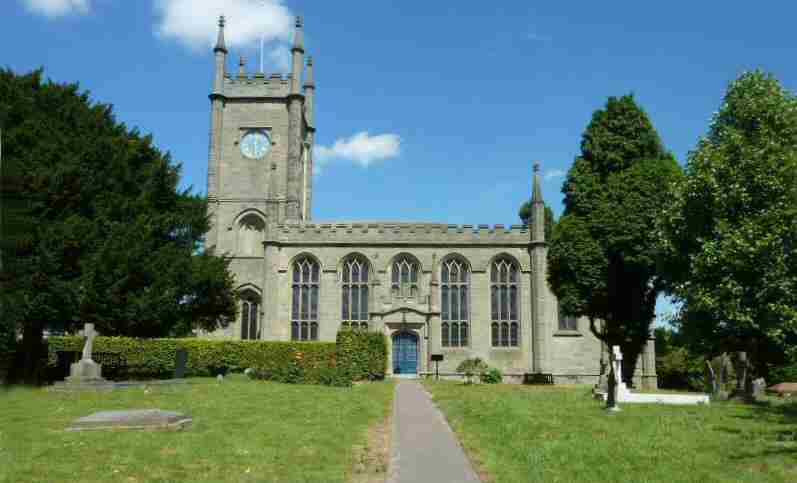
LOOK OUT FOR
Route Point 1 – Derby Cathedral visible from a distance dominates the skyline with its impressive Perpendicular Tower, the second highest in England to the Boston Stump. It was built early in the 16th century, but worship has taken place on this site since the tenth century. Light and spacious inside, the iron screen by Robert Bakewell is an inspirational masterpiece in this proud and beautiful building. A combination of events led to it becoming Derby Cathedral, in 1927. In 1884, a new diocese of Southwell was created and the majority of the County of Derbyshire was transferred from Lichfield to the new see. Five years later, the first assistant bishop to the diocesan Bishop of Southwell was appointed with the title Bishop of Derby. He and his successor worked with the first Bishops of Southwell for the creation of a new diocese of Derby, and this was bought to fruition with the hallowing of All Saints as its Cathedral Church.
Point 3 – St Mary’s Roman Catholic Church has been described as ‘Pugin’s Masterpiece.’ The foundation stone for the church was laid on 4 July 1838, Queen Victoria’s Coronation Day. The church was built in less than 18 months without the benefit of modern construction techniques and project management expertise. It was completed by 9th October 1839. When it was officially opened by Doctor (later Cardinal) Wiseman, he began his sermon with the words: “St Mary’s, without exception the most magnificent thing that Catholics have yet done in modern times in this country.” Pugin’s main rise to prominence had come about through his publication of five books on ecclesiastical architecture. He later became famous for his exterior and interior designs and was knighted for his efforts, which included work on the House of Commons.

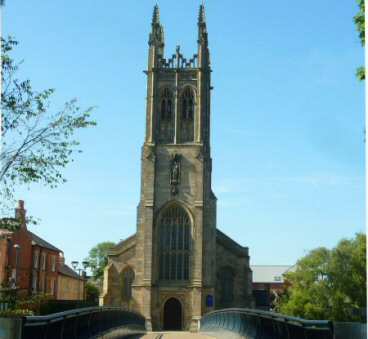
Point 5 – Darley Park with its wide range of different tree species is at its most impressive when approached through the park on the western side of the River Derwent. It is one of Derby’s most beautiful parks and is a popular leisure facility for the city. Situated within easy walking distance of the city centre, it offers peace and quiet and relaxing walks through unspoilt parkland. The park was once home to the county’s most important monastic institution: a house of Augustinian Canons established in 1137 and dedicated to St Helena, who built an abbey on the site. Few traces remain of Darley Abbey, founded in about 1140 and which later became the richest and most powerful abbey in Derbyshire.
Point 6 – Abbey Inn is the only remaining building from the original abbey that is still intact. The pub is on two floors but at the time of writing is closed. Although its original use is uncertain, it may well once have been used by the monks to entertain guests. During a renovation, 12th-century pottery was unearthed. Some of the stonework in Abbey Lane is also thought to date back to the former abbey.
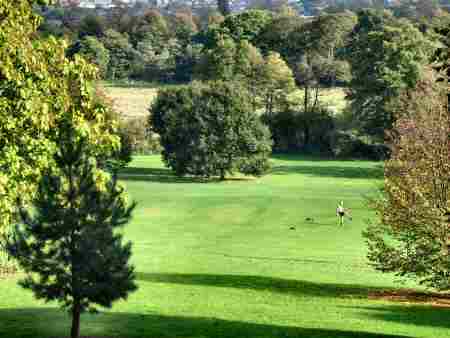

Point 8 – Darley and Nutwood Nature Reserve – Nutwood is very old, originally comprised of oak and coppiced hazel. Until 1985 a tip was in use on the site before a covering of soil was applied. A survey in 2003, recorded over 260 species of plant including the rare bee orchid.
Point 9 – Darley Abbey Mills today forms part of The Derwent Valley Mills World Heritage Site because of the pioneering work of the Evans family. The old village of Darley Abbey is regarded as a desirable place to live. The mills built by Thomas Evans, on the east bank of the Derwent, remain largely intact although no longer used for cotton spinning, but are still in use for a diverse range of purposes.
Point 11 – Handysides Bridge is a fine bowstring bridge built by Andrew Handyside in 1877, which carried the Great Northern Railway across the Derwent. The bridge remained in use until closed by Dr Beeching. There was a public footway along the near side of the structure originally, but this was later removed when the listed bridge was renovated. Since then, pedestrians have used the main span, walking where the tracks were once laid. Handyside established his Britannia heavy engineering works and iron foundry in 1848 and although he originally produced ornamental and architectural ironwork, he later became involved with railway architecture.

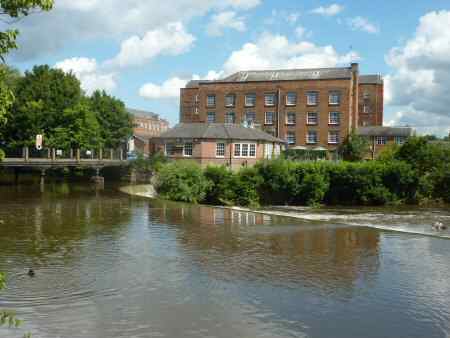
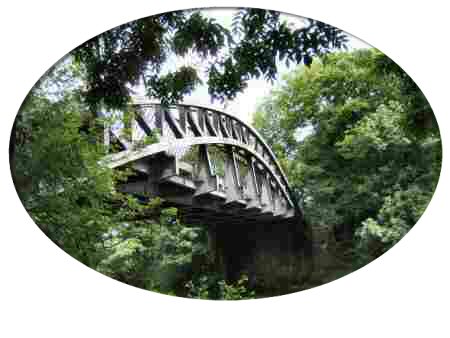
DARLEY ABBEY AND NUTWOOD WALK DETAILS
Length: 4 miles.
Start: Derby Marketplace, City Centre. (SK355364)
Terrain: Easy, flat walking mainly on surfaced paths and pavements. It can be muddy walking through Darley and Nutwood Nature Reserve.
DARLEY ABBEY AND NUTWOOD WALK ROUTE
1. Walk across the marketplace towards the War Memorial and turn right up Iron Gate and carry straight on passing Derby Cathedral and the Dolphin Inn.
2. Maintain the same direction up Queen Street, cross King Street at the pedestrian crossing and walk along a recently created path leading to the footbridge over St Alkmund’s Way.
3. On reaching St Mary’s Roman Catholic Church turn right in front of the church, and then in a few yards go to the left up Darley Lane.
4. Continue straight on up North Street. At the end of which head down towards the Derby Rowing Club’s Head Quarters and the River Derwent.
5. Follow the path by the river with Darley Park on your left. After passing the cricket ground head towards the car park.
6. Cross the car park and leave at the entrance opposite the Abbey Inn.
7. Turn right in front of the public house (closed at the time of writing) and continue straight on along an access road signed for Allestree and Nutwood.
8. After about 150 yards turn left along a broad path into South Avenue and continue forward. Opposite Leafenden Close, cross a wide grass verge and go through a stile into Darley and Nutwood Nature Reserve. Follow the main path and which bends sharply to the right and descends through the reserve. Maintain the same direction to leave the reserve and join an access road to the Midland Canoe Club.
9. Here, you go to the right along the access road with the River Derwent close by on the left. Once you reach the end of the road walk past the bridge to Darley Abbey Mills.
10. After a few yards go to the right up Old Road and halfway up turn to your left along Brick Row. At the end of which go to the right up New Road and then left down the footpath into Darley Park.
11. On reaching Darley Abbey Park Tearoom turn right up a path leading towards the park exit. Just before that point, go to the left at a ‘T’ junction of paths. Continue straight ahead down Darley Grove, before angling to the left towards Handysides Bridge. Do not cross the bridge, join the riverside path leading towards the city centre.
12. Go Under St Mary’s Bridge, with the Bridge Chapel on the right. Continue by the side of the river, passing the Old Silk Mill and Cathedral Green, to reach Exeter Bridge. Here, you turn right along Derwent Street, with the Council House on your left. Walk across Full Street, return to the marketplace, and starting point of the walk.
